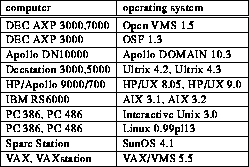
Figure 8.1: Supported hardware platforms and operating systems.





Platform independence has been one of the major design requirements for VISTA. Figure 8.1 shows a list of currently supported computer architectures and operating systems. The only requirement for porting VISTA to another modern computer platform is the existence of close-to-ANSI C and FORTRAN compilers.

Figure 8.1: Supported hardware platforms and operating systems.
The high portability is due to several factors. The first factor is the consequent use of the base system library. No component of the framework, except for the Vista Base System library VBS uses operating-system specific functionality. The second factor is the exclusive use of framework functionality by applications. The framework consists only of portable parts. So when applications use just the framework services and no other contributed components, the whole system will be portable. Several parts of the framework have been implemented from scratch instead of using existing implementations to achieve portability. Another valuable factor is the integrated VMAKE utility which also hides many operating system peculiarities by means of platform configuration files which define system-dependent parameters and language binding details.